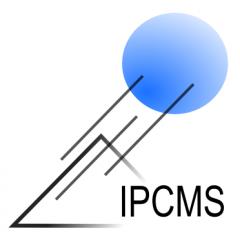Horacio Miguel PASTAWSKI (Instituto de Física Enrique Gaviola, Universidad Nacional de Córdoba-CONICET, Academia Nacional de Ciencias-Argentina)
Abstract :
I will describe the qualitative features of our three-decade long experimental and theoretical quest to
identify emergent phenomena within the quantum dynamics of spin and charge excitations. A quantum
phase transition occurs as an analytical discontinuity of a physical observable, as illustrated by the
Anderson metal-insulator transition in disordered systems. We observed a clear phase transition in the
case of two interacting nuclear spins undergoing Rabi oscillations in presence of a spin environment [1],
that, according to the Fermi Golden Rule, results in an imaginary energy in a 2×2 non-Hermitian effective
Hamiltonian [2]. The oscillations became a purely exponential decay when their coupling strength fell
below a critical value. Our first experimental hint that many-body interactions could lead to irreversible
dynamics, appeared when confronting the insurmountable limitations in performing a perfect time-
reversal procedure, even in a fairly well-controlled setting of nuclear spins [3]. After a decade of work,
we experimentally observed [4] a phase transition to an intrinsically irreversible regime in the
thermodynamic limit. However, its analytical proof has initially eluded us [5]. Recently, we observed a
striking universal stability of coherently diffusive one-dimensional systems with respect to decoherence
[6]. This approach gives a new insight to the “poised realm” hypothesis, promoted for biological systems,
stating that the edge of chaos is a favorable condition to charge and excitonic transport. As pointed out
by R. Laughlin, classical chaos can lead to diffusion, and hence, to a form of quantum dynamics extremely
robust against environmental noise.
[1] Environmentally induced quantum dynamical phase transition in a spin swapping operation, G.A. Álvarez, E.P.Danieli,
P.R.Levstein, and H.M. Pastawski,J. Chem. Phys. 124, 1 (2006);
[2] Revisiting the Fermi Golden Rule: Quantum dynamical phase transition as a paradigm shift H. M. Pastawski Physica B 398,
278 (2007);
[3] Attenuation of polarization echoes in NMR: A test for the emergence of Dynamical Irreversibility in Many-Body Quantum
Systems. P.R. Levstein, G. Usaj, H.M. Pastawski, J. Chem. Phys. 108, 2718 (1998);
[4] Perturbation-independent decay of the Loschmidt echo in a many-spin system studied through scaled dipolar dynamics. C.M.
Sánchez, A.K. Chattah, K.X. Wei, L. Buljubasich, P. Cappellaro, and H.M. Pastawski, Phys. Rev. Lett. 124, 030601 (2020);
[5] Loschmidt echo in many-spin systems: a quest for intrinsic decoherence and emergent irreversibility P. R. Zangara and H. M.
Pastawski, Phys. Scr. 92, 033001(2017);
[6] Universal stability of coherently diffusive 1D systems with respect to decoherence. F.S. Lozano-Negro, E. Alvarez Navarro,
N.C. Chávez, F. Mattiotti, F. Borgonovi, H.M. Pastawski, G.L.Celardo, arXiv.2307.05656.
Contact : Rodolfo JALABERT : rodolfo.jalabert@ipcms.unistra.fr
Upcoming Events
Back to CalendarDSI Seminar presented by Gracie Chaney
Title : “ Machine learned interatomic potentials as a tool for studying complex chemical systems ”
Quantum sciences and materials seminar presented by Patrick Potts
Title : Active quantum reservoir engineering - Using a qubit to manipulate its environment
